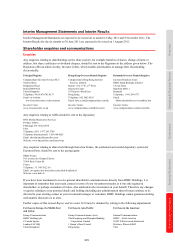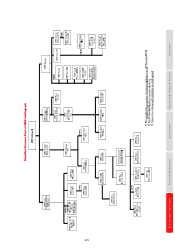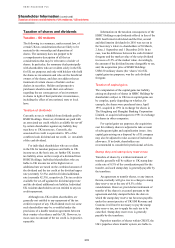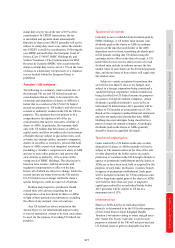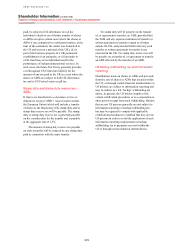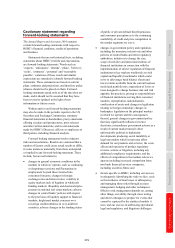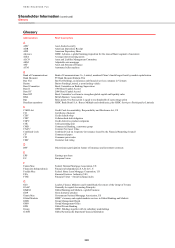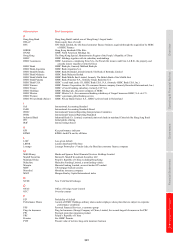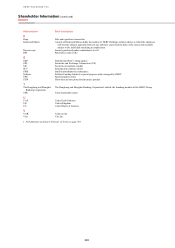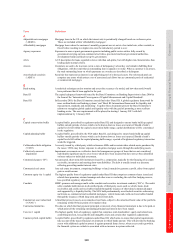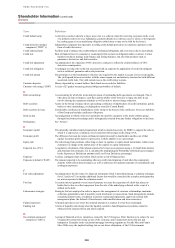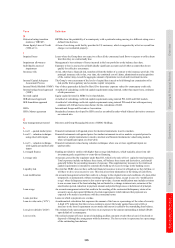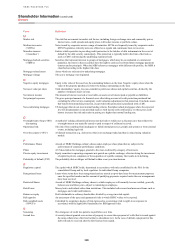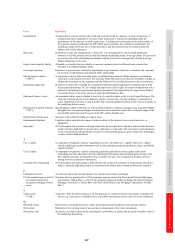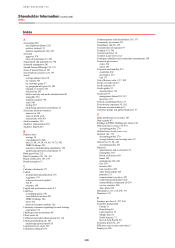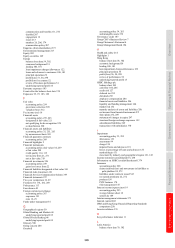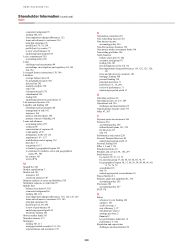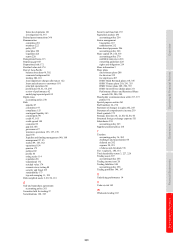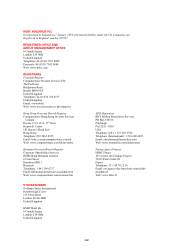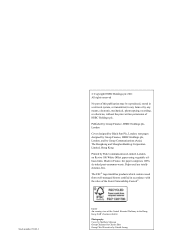HSBC 2010 Annual Report Download - page 385
Download and view the complete annual report
Please find page 385 of the 2010 HSBC annual report below. You can navigate through the pages in the report by either clicking on the pages listed below, or by using the keyword search tool below to find specific information within the annual report.
383
Overview Operating & Financial Review Governance Financial Statements Shareholder Information
Term Definition
A
Adjustable-rate mortgages
(‘ARM’s)
Mortgage loans in the US on which the interest rate is periodically changed based on a reference price.
These are included within ‘affordability mortgages’.
Affordability mortgages Mortgage loans where the customer’s monthly payments are set out at a low initial rate, either variable or
fixed, before resetting to a higher rate once the introductory period is over.
Agency exposures Exposures to near or quasi-government agencies including public sector entities fully owned by
government carrying out non-commercial activities, provincial and local government authorities,
development banks and funds set up by government.
Alt-A A US description for loans regarded as lower risk than sub-prime, but with higher risk characteristics than
lending under normal criteria.
Arrears Customers are said to be in arrears (or in a state of delinquency) when they are behind in fulfilling their
obligations, with the result that an outstanding loan is unpaid or overdue. When a customer is in arrears,
the total outstanding loans on which payments are overdue are described as delinquent.
Asset-backed securities
(‘ABS’s)
Securities that represent an interest in an underlying pool of referenced assets. The referenced pool can
comprise any assets which attract a set of associated cash flows but are commonly pools of residential
or commercial mortgages.
B
Back-testing A statistical technique used to monitor and assess the accuracy of a model, and how that model would
have performed had it been applied in the past.
Basel II The capital adequacy framework issued by the Basel Committee on Banking Supervision in June 2006 in
the form of the ‘International Convergence of Capital Measurement and Capital Standards’.
Basel III In December 2010, the Basel Committee issued final rules ‘Basel III: A global regulatory framework for
more resilient banks and banking systems’ and ‘Basel III: International framework for liquidity risk
measurement, standards and monitoring’. Together these documents present the Basel Committee’s
reforms to strengthen global capital and liquidity rules with the goal of promoting a more resilient
banking sector. The new requirements will be phased in starting 1 January 2013 with full
implementation by 1 January 2019.
C
Capital conservation buffer A capital buffer, prescribed by regulators under Basel III, and designed to ensure banks build up capital
buffers outside periods of stress which can be drawn down as losses are incurred. Should a bank’s
capital levels fall within the capital conservation buffer range, capital distributions will be constrained
by the regulators.
Capital planning buffer A capital buffer, prescribed by the FSA under Basel II, and designed to ensure banks build up capital
buffers outside periods of stress which can be drawn down as losses are incurred. Should a bank’s
capital levels fall within the capital planning buffer range, a period of heightened regulatory interaction
would be triggered.
Collateralised debt obligation
(‘CDO’)
A security issued by a third-party which references ABSs and/or certain other related assets purchased by
the issuer. CDOs may feature exposure to sub-prime mortgage assets through the underlying assets.
Collectively assessed
impairment
Impairment assessment on a collective basis for homogeneous groups of loans that are not considered
individually significant and to cover losses which have been incurred but have not yet been identified
on loans subject to individual assessment.
Commercial paper (‘CP’) An unsecured, short-term debt instrument issued by a corporation, typically for the financing of accounts
receivable, inventories and meeting short-term liabilities. The debt is usually issued at a discount,
reflecting prevailing market interest rates.
Commercial real estate Any real estate investment, comprising buildings or land, intended to generate a profit, either from capital
gain or rental income.
Common equity tier 1 capital The highest quality form of regulatory capital under Basel III that comprises common shares issued and
related share premium, retained earnings and other reserves excluding the cash flow hedging reserve,
less specified regulatory adjustments.
Conduits HSBC sponsors and manages multi-seller conduits and securities investment conduits (‘SIC’s). The multi-
seller conduits hold interests in diversified pools of third-party assets such as vehicle loans, trade
receivables and credit card receivables funded through the issuance of short-dated commercial paper
and supported by a liquidity facility. The SICs hold predominantly asset-backed securities referencing
such items as commercial and residential mortgages, vehicle loans and credit card receivables funded
through the issuance of both long-term and short-term debt.
Constant net asset value fund
(‘CNAV’)
A fund that prices its assets on an amortised cost basis, subject to the amortised book value of the portfolio
remaining within 50 basis points of its market value.
Contractual maturities The date on which the final payment (principal or interest) of any financial instrument is due to be paid, at
which point all the remaining outstanding principal and interest have been repaid.
Core tier 1 capital The highest quality form of regulatory capital that comprises total shareholders’ equity and related non-
controlling interests, less goodwill and intangible assets and certain other regulatory adjustments.
Countercyclical capital buffer A capital buffer, prescribed by regulators under Basel III, which aims to ensure that capital requirements
take account of the macro-financial environment in which banks operate. This will provide the banking
sector with additional capital to protect it against potential future losses, when excess credit growth in
the financial system as a whole is associated with an increase in system-wide risk.


